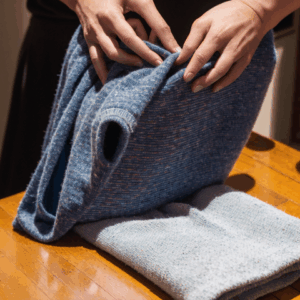Synthetics: The Modern Innovation
Introduction
In the world of fashion and textiles, synthetics represent a revolution, bringing unprecedented change to clothing and fabric design. Born from the fusion of science and creativity, synthetic fibers offer unique characteristics that provide versatility and economic viability. Let’s explore the rise of synthetic fibers, their properties, applications, and the way they have shaped the contemporary fabric industry.
A Historical Perspective
The emergence of synthetic fibers can be traced back to the early 20th century. In 1935, Wallace Carothers invented the first synthetic fiber known as nylon, which laid the foundation for many subsequent innovations. Over time, this gave birth to other synthetic materials like polyester, acrylic, and spandex, each with its unique attributes.
Characteristics and Types
Synthetic fibers stand apart for their strength, durability, and resistance to various environmental factors. Let’s delve into some of the most prominent types of synthetic fibers:
- Polyester: Known for its wrinkle resistance and longevity, polyester is widely used in everything from everyday clothing to technical gear. It’s resistant to moisture, making it ideal for outdoor wear.
- Nylon: A strong, elastic material, nylon offers resistance to abrasion and a smooth finish. It finds application in activewear, swimwear, and hosiery.
- Acrylic: Soft and lightweight, acrylic closely resembles wool and provides warmth without the weight. It’s commonly used in sweaters, blankets, and outdoor fabrics.
- Spandex: Exceptionally elastic, spandex can stretch up to five times its original length, making it perfect for form-fitting clothing.
Environmental Impact
The production of synthetic fibers has been criticized for its environmental impact, including the use of petroleum-based resources and high energy consumption. However, innovations in recycling and responsible manufacturing are paving the way for more sustainable practices.
Application in Fashion and Beyond
The versatility of synthetic fibers has led to their use in various domains beyond fashion. From automotive interiors to home furnishings, the application of synthetics has expanded significantly. In the fashion industry, designers leverage the unique attributes of these fibers to craft garments that offer functionality and aesthetic appeal.
Synthetic fibers have emerged as a modern innovation in the textile industry, offering a range of benefits that cater to various needs and applications. The convergence of technology, creativity, and sustainability has allowed synthetics to be a pivotal part of our lives. In the next section, we’ll explore the technological advancements in synthetic fibers, delve deeper into their environmental aspects, and uncover the trends shaping the future of this dynamic material.
Technological Advancements
The continuous evolution of synthetic fibers is largely driven by technological advancements. Modern manufacturing techniques have enabled the creation of fibers with unique characteristics, such as moisture-wicking, flame resistance, and antimicrobial properties. These attributes have extended the application of synthetics into specialized fields like sports, medical textiles, and industrial applications.
The Role of Synthetics in Sustainable Fashion
Sustainability has become a central theme in the fashion industry, and synthetic fibers are playing a significant role in this transformation. Recycled polyester, derived from post-consumer plastic bottles, has become a popular choice among eco-conscious brands. Research and development into bio-based synthetics offer a promising path towards reducing dependency on fossil fuels.
Blending with Natural Fibers
The synergy between synthetic and natural fibers has given rise to textiles that combine the best of both worlds. Blending synthetics like polyester with natural fibers like cotton can enhance durability, comfort, and appearance. These blends offer a balanced approach to textile design, catering to a diverse range of preferences and needs.
The Art of Tailoring with Synthetics
In the realm of tailoring, synthetics offer opportunities and challenges alike. The strength and elasticity of materials like spandex enable the crafting of garments that mold to the body. Master tailors like those at Ella’s Alterations harness these properties to create pieces that resonate with contemporary fashion trends while ensuring comfort and fit.
Ethical Considerations
While synthetic fibers have brought immense benefits, they also raise ethical considerations, particularly regarding their environmental impact. Microfiber pollution, non-biodegradability, and energy-intensive production are some of the concerns that the industry is addressing through responsible sourcing, recycling, and innovative manufacturing processes.
Looking into the Future
As we look to the future, it’s evident that synthetic fibers will continue to evolve, driven by technological innovation, consumer demand, and a growing emphasis on sustainability. The intersection of functionality, design, and ethics will shape the direction of synthetic textiles in the years to come.
Conclusion
Synthetic fibers are a testament to human ingenuity, encapsulating the dynamism of modern innovation. From technological advancements to sustainable practices, the world of synthetics is rich and multifaceted. As master tailors like Ella’s Alterations continue to explore and embrace these materials, we can anticipate a future where fashion and function coalesce in harmony.

Previous: Wool: The Warm Embrace Next Up: Conclusion: The Symphony of Fabrics


